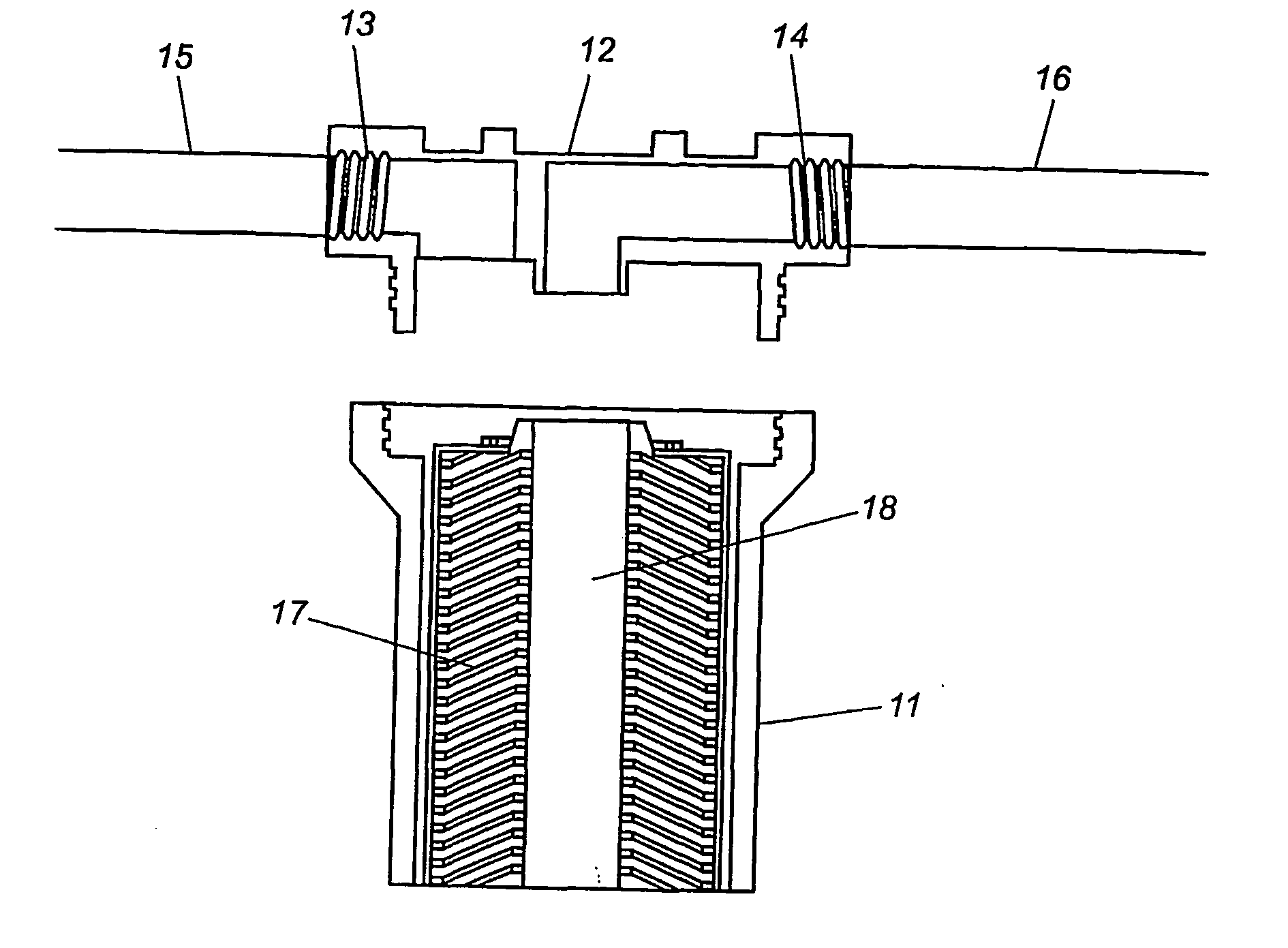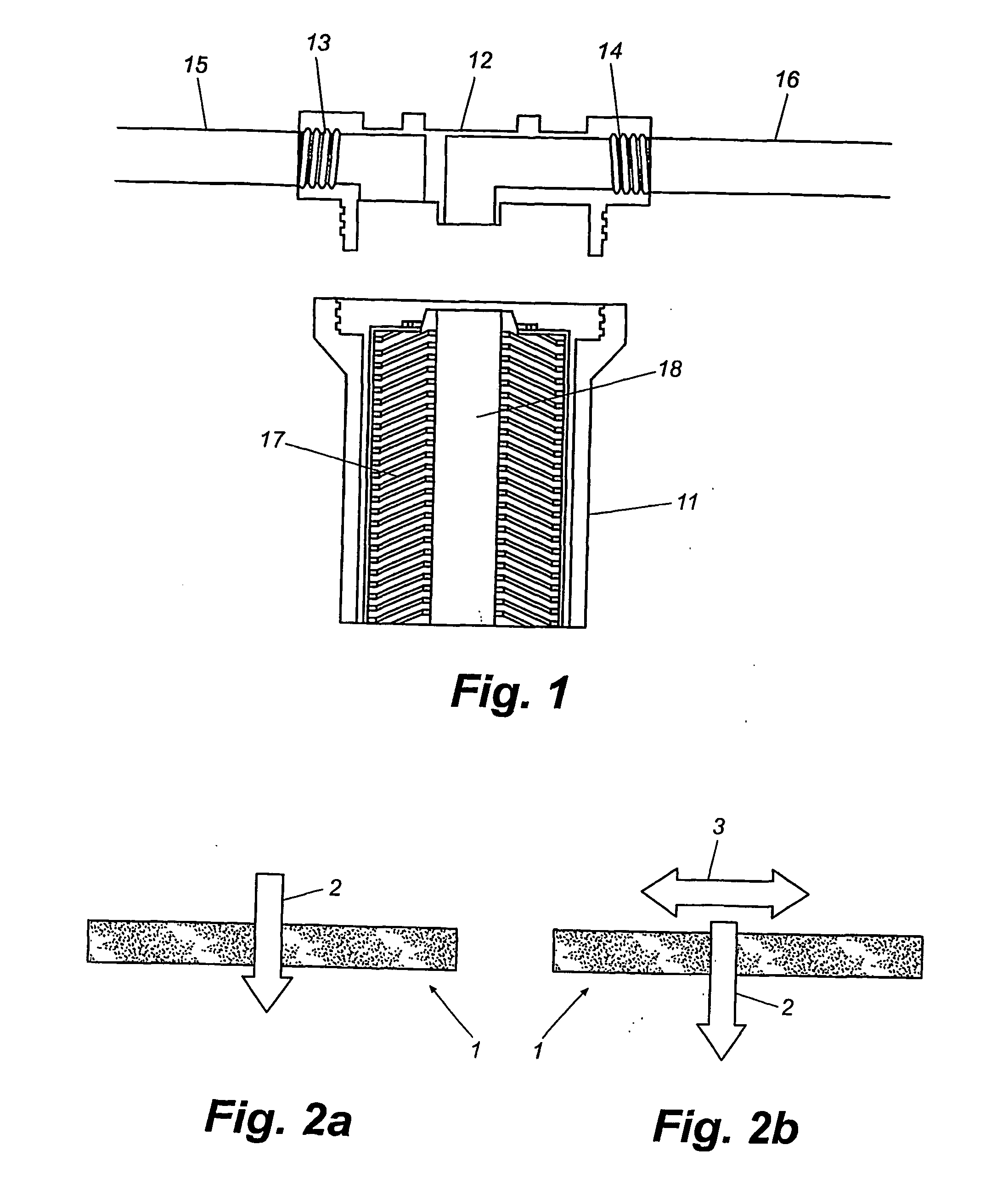Purification materials and method of filtering using the same
a technology of purification materials and filters, applied in gravity filters, separation processes, filtration separation, etc., can solve the problems of short product life, increased device back pressure, difficult to contain particles, etc., and achieve the effect of compromising the effect of filters generated with or without binder
- Summary
- Abstract
- Description
- Claims
- Application Information
AI Technical Summary
Benefits of technology
Problems solved by technology
Method used
Image
Examples
example 1
[0086] A cylindrical filter block 17 of the shape shown in FIG. 2 may be prepared with a material composition of approximately 42.5% apatite obtained from Murlin Chemical in PA in the form of hydroxycalciumphosphate and approximately 42.5% GAC obtained from KX Industries. Approximately 10% inorganic binder, selected from one or more of the inorganics described above, as a first binder is used to increase the particle size of the hydroxycalciumphosphate and 15% (polyethylene) thermoplastic binder material selected from one or more of the thermoplastics described above is used as a second binder to generate the porous block of all components.
[0087] The material may be extruded at a temperature that provides a uniform mixture of mineral adsorbent, GAC, aggregating binder and thermoplastic binder. The cylindrical or toroidally shaped block 17 is approximately 9.8 inches in length, with an outer diameter of approximately 2.5 inches and an inner diameter (the bore 18) of approximately 1....
example 2
[0088] The filter prepared in Example 1 may be challenged by exposing it to tap water that is filtered with activated carbon and then seeded with 2.3×108 colony forming units per liter of K. terrigena bacteria and 1.0×107 units per liter of MS2 virus. The seeded water is passed through the filter block 17 at a flow rate of approximately 2 liters / minute for 3 minutes, followed by collection of a 500 ml effluent sample. Bacteria may be assayed on m-Endo agar plates by membrane filtration procedure, while the MS2 virus may be assayed by standard methods.
example 3
[0089] The composite prepared in Example 1 may be used to reduce a water soluble chlorine species such as hypochlorous acid in an oxidized state to a chlorine species in a reduced state (choride). Chlorine levels of approximately 2.0 mg / L were reduced to below the detection limits of standard test strip based assays.
[0090] As described above, the material of the invention is extremely useful in the area of water purification, particularly the area of drinking water purification. Because of the extremely high efficiency with which the material of the present invention removes chemicals and microorganisms from water, it meets and exceeds the EPA guidelines for materials used as microbiological and chemical water purifiers. In addition to functioning as a purifier for drinking water, the material of the invention can also be used to purify water used for recreational purposes, such as water used in swimming pools, hot tubs, and spas.
[0091] As the result of the ability of the material...
PUM
| Property | Measurement | Unit |
|---|---|---|
| size | aaaaa | aaaaa |
| size | aaaaa | aaaaa |
| resistance | aaaaa | aaaaa |
Abstract
Description
Claims
Application Information
 Login to View More
Login to View More - R&D
- Intellectual Property
- Life Sciences
- Materials
- Tech Scout
- Unparalleled Data Quality
- Higher Quality Content
- 60% Fewer Hallucinations
Browse by: Latest US Patents, China's latest patents, Technical Efficacy Thesaurus, Application Domain, Technology Topic, Popular Technical Reports.
© 2025 PatSnap. All rights reserved.Legal|Privacy policy|Modern Slavery Act Transparency Statement|Sitemap|About US| Contact US: help@patsnap.com


